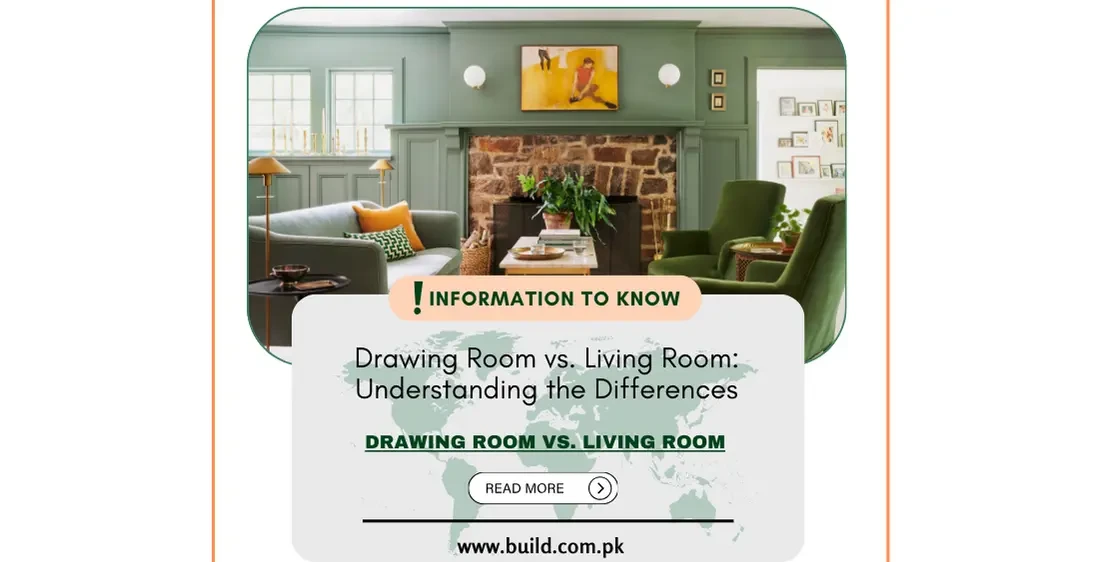Drawing Room vs. Living Room: Understanding the Differences

Introduction:
The terms "drawing room" and "living
room" are often used interchangeably, but they historically refer to
distinct spaces within a home, each serving unique purposes and reflecting
different design traditions. In this comprehensive guide, we'll explore the
origins, characteristics, and modern interpretations of drawing rooms and
living rooms, shedding light on their historical significance and how they have
evolved in contemporary interior design.
Understanding the Drawing Room:
The term "drawing room" originated in the 18th
century and referred to a formal space within grand homes where guests were
received and entertained. Drawing rooms were typically located on the ground
floor and were considered the most elegant and well-appointed rooms in the
house. These rooms were primarily used for social gatherings, hosting important
visitors, and conducting formal conversations.
Characteristics of a Drawing Room
Drawing rooms were characterized by certain features that
emphasized their formal and sophisticated nature:
- Elegant Furnishings: Drawing rooms were furnished with high-quality, often ornate furniture such as chaise lounges, settees, and upholstered chairs. The furniture was arranged to facilitate conversation and social interaction.
- Fine Art and Decor: Drawing rooms often showcased fine art, decorative mirrors, and elaborate wall coverings like silk wallpaper or intricate paneling.
- Symmetrical Layout: The layout of a drawing room was
symmetrical and balanced, with a focus on creating a harmonious and visually
pleasing environment.
Evolution into the Living Room
Over time, the concept of the drawing room evolved into what
we now commonly refer to as the "living room" or "sitting
room." This shift occurred during the 19th and early 20th centuries,
reflecting changes in social norms, lifestyles, and architectural trends.
Characteristics of a Living Room:
The living room retains some similarities with the drawing
room but is generally more informal and multifunctional:
- Casual Comfort: Living rooms prioritize comfort and relaxation, featuring cozy seating options like sofas, armchairs, and recliners.
- Entertainment Center: Modern living rooms often incorporate technology such as televisions, audio systems, and media consoles for entertainment purposes.
- Versatile Use: Living rooms serve as everyday gathering spaces for families and guests, accommodating activities ranging from watching TV to reading or socializing.
- Personalized Decor: Unlike the formal decor of drawing rooms,
living rooms reflect individual tastes and lifestyles through a mix of
furniture styles, decor accents, and personal touches.
Modern Interpretations and Blurring of Terms:
In contemporary interior design, the distinction between
drawing rooms and living rooms has become less rigid. Many homes use the term
"living room" to describe a central gathering space that combines
elements of both formal and informal settings. The evolution of open floor plans
has further contributed to the blending of traditional room functions, with
living areas seamlessly integrating dining and kitchen spaces.
Practical Considerations in Design
When designing a drawing room or living room, consider the
following factors to create a functional and aesthetically pleasing space:
- Purpose and Use: Determine how you intend to use the room—whether it's for formal entertaining, everyday relaxation, or a combination of both.
- Furniture Arrangement: Arrange furniture to facilitate conversation and traffic flow, taking into account focal points such as fireplaces, windows, or entertainment centers.
- Lighting and Ambiance: Incorporate a mix of lighting sources, including overhead fixtures, table lamps, and floor lamps, to create a welcoming atmosphere.
- Decorative Elements: Personalize the space with art,
decorative accents, and textiles that reflect your style and preferences.
Conclusion:
In summary, the distinction between drawing rooms and living
rooms reflects the evolution of social customs and architectural trends over
centuries. While drawing rooms evoke a sense of formal elegance and historic
tradition, living rooms embody a more relaxed and versatile approach to
contemporary living. Understanding the characteristics and historical
significance of these spaces can inform your approach to interior design,
allowing you to create a harmonious and functional environment that meets your
lifestyle needs and aesthetic preferences. Whether you prefer the refined
sophistication of a drawing room or the cozy comfort of a modern living room,
each space offers unique opportunities for personal expression and enjoyment









